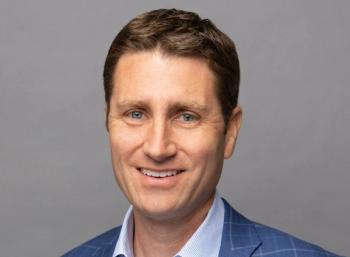
Forget boiling the ocean and make a large impact in these clinical areas | Viewpoint
A closer look at patient experiences and preferences shows a growing preference for virtual specialty care, along with more access to higher quality providers.
As the focus on value-based care sharpens, patients report they are dissatisfied with our current healthcare system:
Health plans and providers alike are seeking ways to improve outcomes and meet patient needs, all while lowering costs. While the industry has begun to make headway in a few of these areas, our healthcare system is vast and complex. Attempting to solve these massive challenges can feel like pulling a thread that continues to unravel, leading to another problem that has to be addressed.
Healthcare organizations should focus on clinical areas where they can make a large impact, instead of attempting to boil the ocean. Fortunately, individual use cases within the care continuum can help uncover broader trends and point to new opportunities in patient care and cost control.
For instance, by analyzing recent usage trends and patient experiences with second opinions, healthcare organizations of all types can unlock valuable insights into patient needs and how to address them in ways that deepen care value.
Broader access issues
An analysis of virtual second opinions from January 2023 to June 2024 found that cardiology and cancer conditions accounted for the majority of demand—
These conditions are significant cost drivers for both health plans and patients, with the cost of cancer care in the United States projected to exceed
Not only are these diseases more prevalent and costly than ever, but both cardiology and oncology suffer from a lack of accessible doctors. Nearly
It doesn’t take a data analyst to understand why these virtual second opinion trends are occurring: people don’t have local access to the care they need, so they must look for options beyond their community.
But a closer look at patient experiences and preferences shows a growing preference for virtual specialty care, along with more access to higher quality providers.
Unfortunately, analyses show that there is a
Industry takeaways from trends
Virtual second opinions represent just one segment of healthcare, but usage and preferences among patients tells a clear story for the industry at large. As healthcare organizations lean into patient preferences and care quality, learnings from virtual second opinion usage help to plot out a path to improvement:
1. Virtual specialty care will increasingly fill critical care gaps.
“Specialty care deserts” aren’t only associated with heart and cancer conditions. Patients with rare diseases, complex conditions and acute diagnoses struggle to find local care in a timely manner. The average wait time for a specialty appointment is
Across the board, data shows that patients are drawn to the convenience and speed of virtual services, including lower associated costs and travel time. However, as specialty care deserts continue to pop up throughout the country, patients may increasingly turn to virtual options out of necessity, as well. Health plans and provider organizations opening access to virtual specialty care can capture this rising demand and give patients the access they need.
2. Focus on benefits for priority member segments.
Point solutions abound for chronic conditions like obesity and diabetes. While these targeted, condition-specific programs can move the needle on costs and outcomes for larger populations, increasingly, this isn’t enough. There is a lack of support for patients with acute or life-altering diagnoses, which can have more of a financial impact than you might think.
Adding virtual benefits to support second opinions and specialty care can
3. Increasingly, value means quality.
The United States is home to some of the best doctors in the world, but no one can have all the answers. Misdiagnoses are estimated to cost around
As healthcare becomes more collaborative, supporting better data sharing and interoperability, the ease of access to specialists—regardless of their geographic location—can dramatically improve patient outcomes and care quality.
Generally, virtual second opinions result in a change in diagnosis or treatment plan
Engaging members in virtual specialty care
Just because you build it, doesn’t mean they will come. New offerings to improve member experience and outcomes must be targeted and convenient, above all else, to meet consumer needs.
For instance, a recent, oncology-specific virtual second opinion program at a large national health plan focused on a targeted subset of the plan’s population, and through proactive outreach, found over 20% signup from this member group. The program demonstrates the value of meeting the demand for virtual specialty care, especially when it is proactively offered to members and patients.
By taking into account the increased demand for specialty care access and virtual services and responding with creative solutions, providers and health plans can improve patient access, closing gaps in care while saving money and improving outcomes.
Frank McGillin is CEO at The Clinic by Cleveland Clinic, a joint venture between Cleveland Clinic and Amwell.
















































